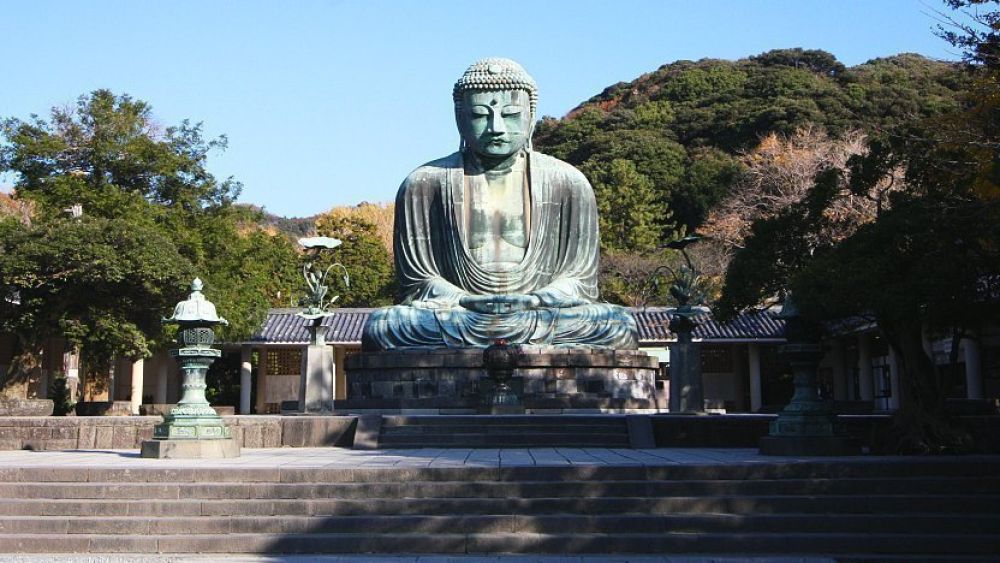

The Great Buddha of Kamakura, Japan, known as Daibutsu in Japanese, is a monumental outdoor bronze statue of Amida Buddha located at the Kotoku-in Temple in Kamakura, Kanagawa Prefecture. With a history steeped in centuries, the statue has been a significant focal point for tourists from around the globe.
The Great Buddha was cast in 1252 during the Kamakura period, which was known for the emergence of a new warrior class and a movement towards Buddhism, especially Zen Buddhism. The statue was originally housed in a grand wooden temple, but a series of disasters in the 14th and 15th centuries, including a tsunami in 1498, destroyed the temple buildings. The Daibutsu has since sat in the open air, embodying resilience and serenity. The main statue stands at an impressive height of 13.35 meters (44 feet) and weighs approximately 121 tonnes, making it the second-largest monumental Buddha in Japan after the Todai-ji in Nara.
Tourism in Kamakura started to flourish with the advent of rail travel in the late 19th century, enabling easier access for both domestic and international visitors. The Great Buddha became one of the quintessential symbols of Kamakura, attracting tourists with its grandeur and tranquility. Throughout the 20th century, post-war growth in Japan's economy and advancements in transportation brought increasing numbers of tourists to the historic city. The site has been maintained diligently, surviving natural disasters and the wear of time, allowing it to become a timeless attraction within Japan.
Visitors to the Great Buddha of Kamajura can enjoy not only the majesty of the statue but also the serene temple grounds. For a small fee, guests can even enter the interior of the statue, gaining a unique perspective on its structure and craftsmanship. The surrounding city of Kamakura offers a range of historical sites, beautiful beaches, and hiking trails, making it a well-rounded destination for tourists interested in Japanese culture and nature.
Eco-Friendly Tourism: In recent years, there has been a rise in sustainable travel options with tours emphasizing walking, cycling, and public transport to reduce the carbon footprint of traveling within Kamakura. Digital Enhancements: The use of digital tools to enhance the tourist experience has been on the rise, with augmented reality apps offering historical insights and interactive guides providing detailed explanations of the Great Buddha and its history. Cultural Immersion: Experiential tourism trends have also taken hold, where visitors seek authentic cultural experiences such as traditional tea ceremonies, Zen meditation sessions, and Japanese calligraphy workshops in the area. With a history and presence as impactful as the Great Buddha itself, tourism in Kamakura continues to evolve, respecting its rich heritage while embracing modern trends and technologies.